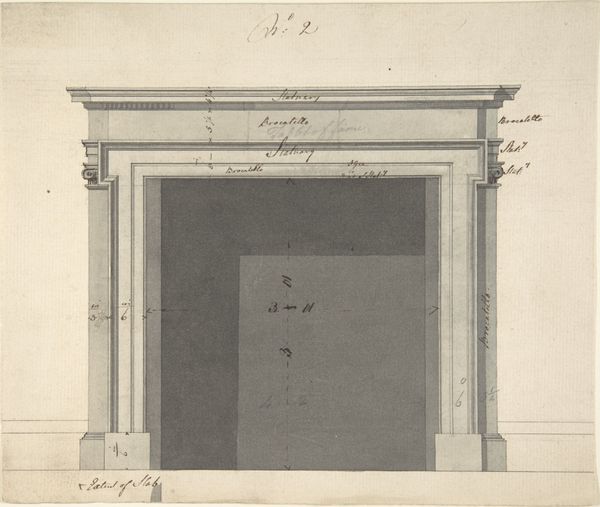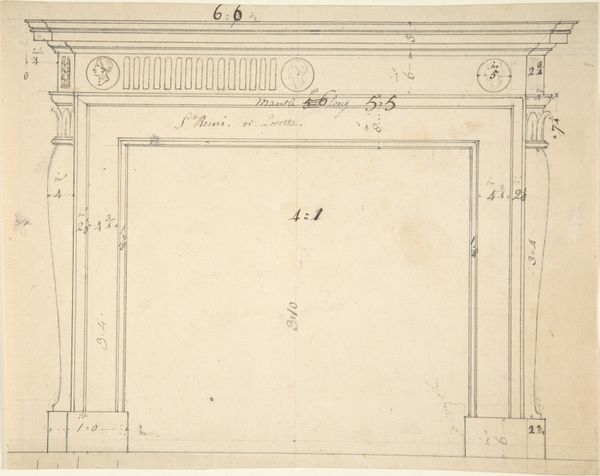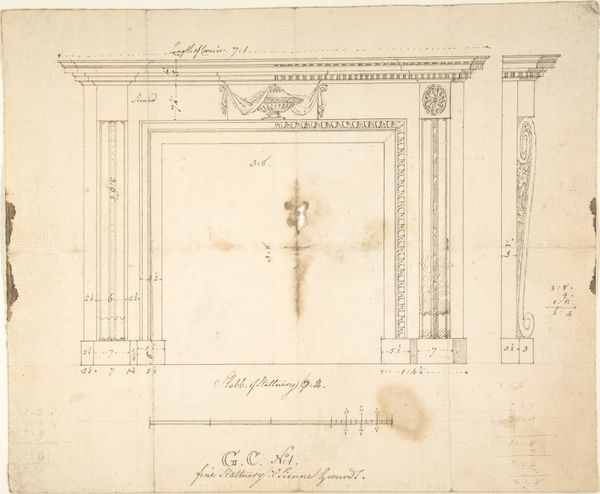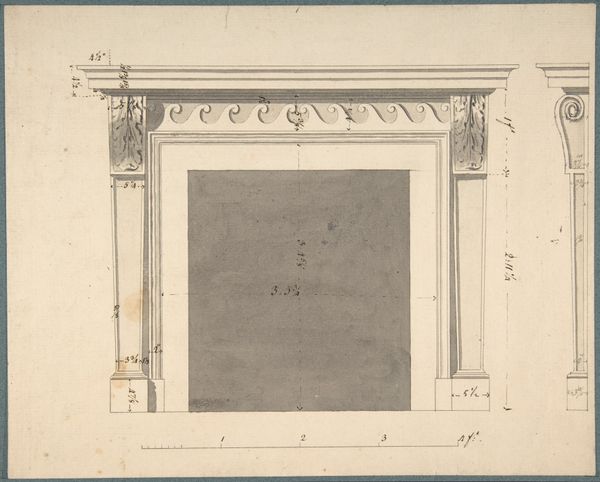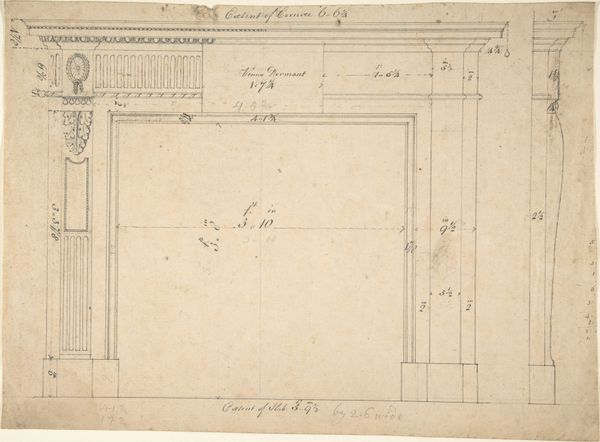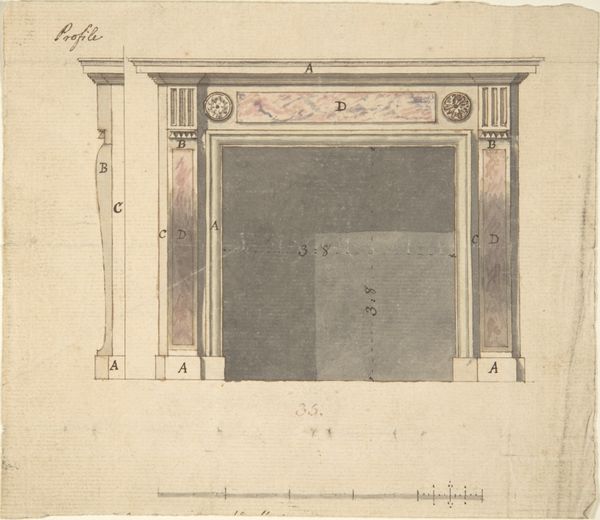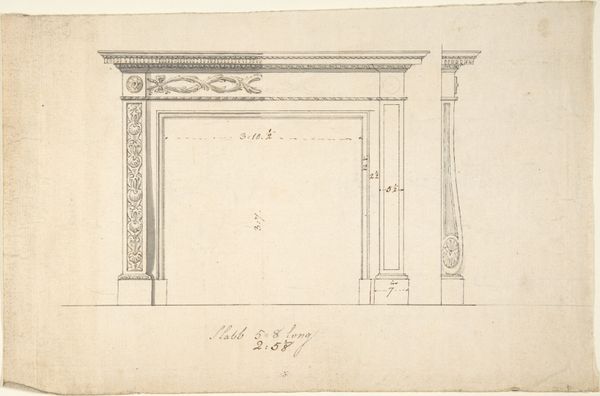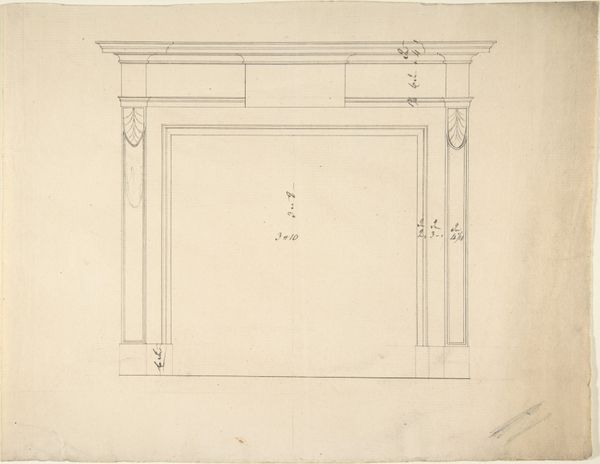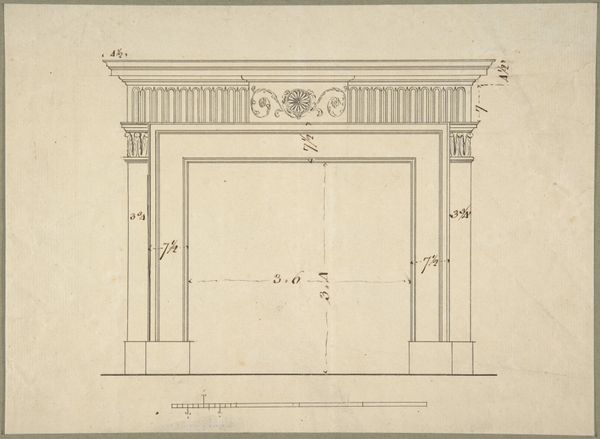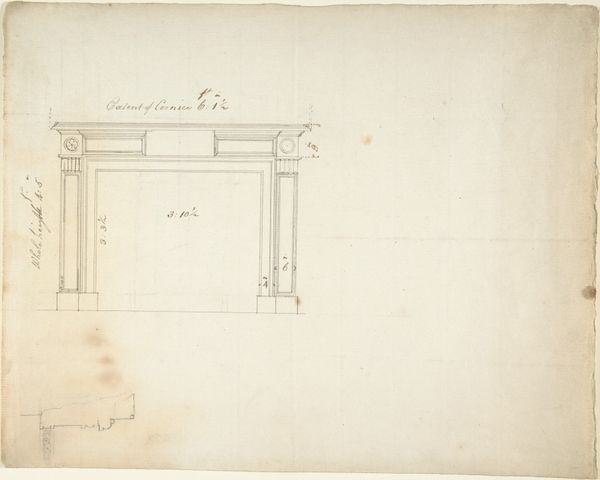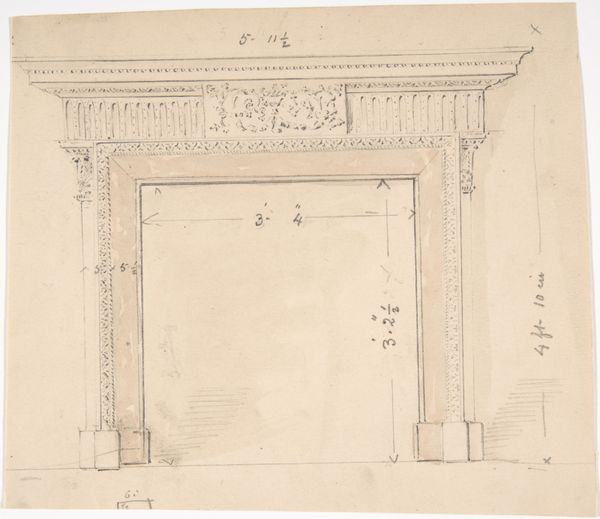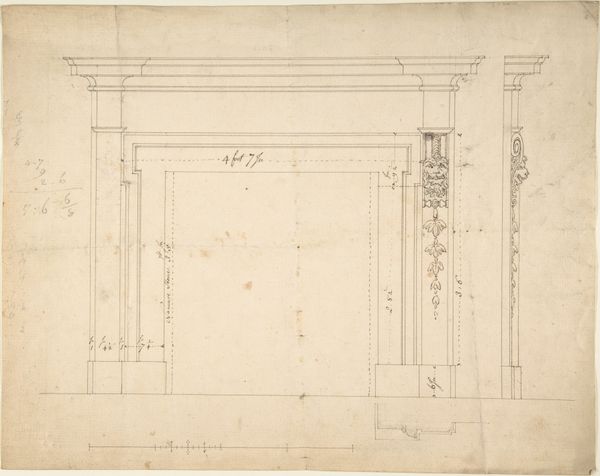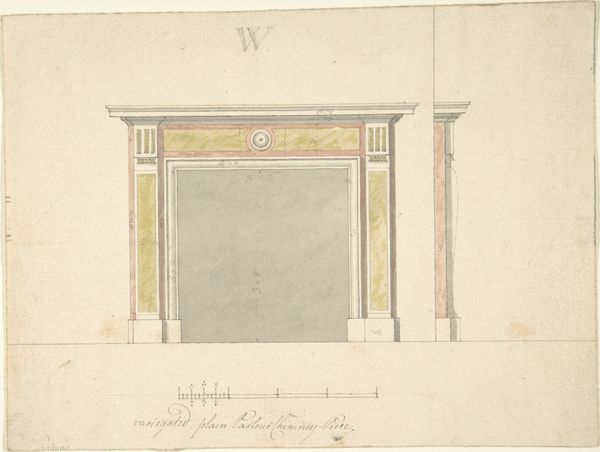
Drawings for a Chimney-piece for 25 Harley Street, Westminster, London 1740 - 1796
0:00
0:00
drawing, print, pencil, pen, architecture
#
drawing
#
neoclacissism
# print
#
landscape
#
pencil
#
pen
#
architecture
Dimensions: sheet: 7 1/2 x 8 in. (19 x 20.3 cm)
Copyright: Public Domain
Curator: We’re looking at "Drawings for a Chimney-piece for 25 Harley Street, Westminster, London," attributed to Sir William Chambers, dating approximately between 1740 and 1796. It’s rendered in pencil, pen, and print. Editor: My immediate impression is austerity. It feels quite formal, very much about restraint and measured proportions. Curator: Chambers was a key figure in the British Neoclassical movement. The design reflects a prevailing cultural desire to emulate the perceived rationality and order of ancient Greece and Rome. Think about how the British elite were building estates, engaging in landscape design…it's all part of constructing this very specific idea of British identity and power. Editor: Absolutely, and consider the address itself: Harley Street. Even now it signifies wealth and status, right? Designing something like a chimney piece was more than just about functionality or aesthetics; it was about constructing a very specific kind of performance of gentility, of Britishness itself. What does that level of performative identity do to oppress others who are not afforded these niceties or status? Curator: And remember, the visual language of Neoclassicism had strong associations with governmental authority, too. So by incorporating such a chimney piece, it visually signaled to visitors alignment with existing social hierarchies and established political norms. Editor: The measurements scribbled on the paper – the “extreme length of cornice,” for instance – they highlight the calculated nature of the design. There's nothing organic or spontaneous about it. Also consider the material used in comparison to others at the time: How do certain communities have accessibility to the material necessary to create things that emulate this identity. What is the larger statement about what this piece brings to Neoclassicism Curator: Precisely. This drawing would have been a crucial stage, not just about aesthetic vision, but material realities. These choices tell a larger story about taste, power, and empire during the era. The elite decided what would or would not be considered of value. Editor: Viewing it this way reframes how we see architecture of that period, don't you think? What was deemed architectural innovation actually just reinforced societal structure. Curator: Indeed. Instead of merely an architectural design, it is a visual manifesto about dominance. Editor: Food for thought. This work reminds me to think twice before taking beauty for granted, especially when analyzing the past.
Comments
No comments
Be the first to comment and join the conversation on the ultimate creative platform.
